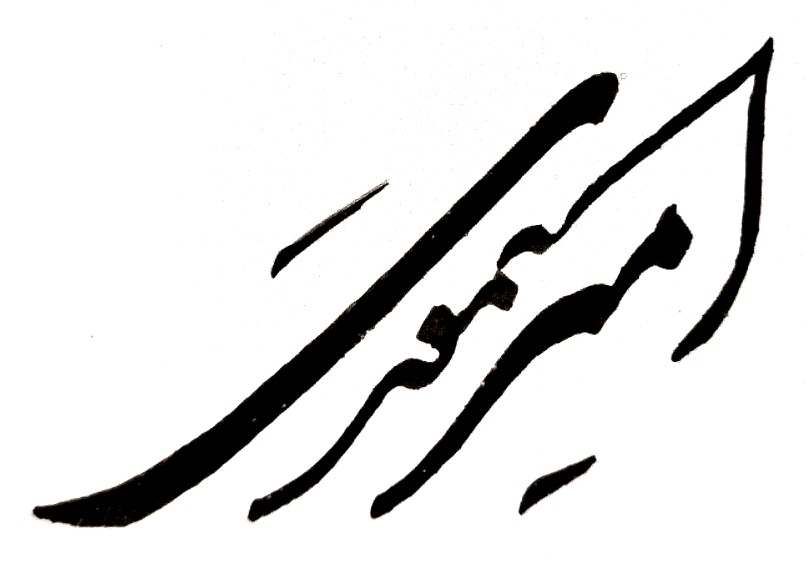
© teymuri.codeberg.page - All rights reserved.
All compositions listed on this page are protected by AKM / AUSTRO MECHANA starting from January 2026 (and by gema until the end of December 2025).

© teymuri.codeberg.page - All rights reserved.
All compositions listed on this page are protected by AKM / AUSTRO MECHANA starting from January 2026 (and by gema until the end of December 2025).
This is my short contribution text for the 2025 Rencontres Acousmatiques annual meeting, which takes place at the CraneLab, Montbard, France. This text briefly outlines my perspectives on polyphonic music within a multichannel setup.
Firstly, I would like to note that the spatialization of sound is not a central focus of my musical creation. My primary interest lies in the creation of transitional sound sequences (see my article on Sounding Future). However, this does not mean that the localization of sounds in my work is arbitrary or unimportant! On the contrary, the composed placement of sounds and their choreography is a compositional tool that I use to make the overall picture of a multi-channel piece distinguishable and directed. This also means that the sound-geography of my compositions is usually pre-declared and "ingrained" in the piece, making live diffusion during a performance largely unnecessary (exceptions include spontaneous adjustments due to room acoustics during playback).
In this short text, I would like to share some of my thoughts regarding polyphony and multichannel music. These thoughts specifically relate to my recent work, which was presented at the Rencontres Acousmatiques 2025.
The question of polyphony in multichannel music, in my view, cannot be reduced "merely" to the number of voices, but is highly dependent on the sonic characteristics and the relatedness of the events within the voices. One such property, which simultaneously provides structure, is the confidence-building "instrument" of repetition (or its sister technique, variation). Although the term repetition intuitively relates to time (i.e., the repetition of rhythmic patterns), no restriction of the repetitive to the temporal dimension is intended here. Any further sonic dimension can become a recognizable, form-building element through direct repetition or through "indirect repetition" (read: variation). Thus, repetition and variation allow the separate events in the individual channels to be perceived as related, even identical, structures, thereby turning the polyphonic complexes into a "collective event" that is easier to decode.
To evaluate the degree of perceptibility of polyphonic structures, I would like to propose the following classification, which places the "relatedness of sounds" at its core:
The perceptibility of simultaneous sound events, primarily depends on two criteria: 1. the number of voices and 2. the similarity of the sound materials used in the respective voices and their developments. Assuming that an electronic sound can consist of (arbitrarily) many dimensions (in contrast to the more limited natural-based or object-based sounds, such as sounds produced with physical objects or instruments), the hypothesis can be formulated that each of the dimensions of an N-dimensional sound represents a reference point that allows a similarity comparison with a "cognate" sound (a sound composed of the same dimensions). A dimension can include classical, general parameters such as duration, pitch, and intensity, or extended parameters such as the harmonic nature of the sound, various filter or equalizer settings to control the frequency content, the fine localization of the sound in space (with adequate speaker setups), envelope characteristics, reverb parameters, etc.
Based on this generalization and the resulting possibility to measure difference and distance between sounds (considered as compositions of their dimensions), it can be defined that the perceptibility of polyphonic/multichannel structures decreases with the reduction in similarity of the dimensions of sound events and their development schemes – and this in inverse relation to the number of channels/voices:
In the lower left corner of the graph, where the perceptibility is shown to be highest, the respective dimensions exhibit maximum similarity (they are identical!), and the number of voices is at its lowest (a single voice). In simpler terms, this means exactly the same sound in the same channel! In this case, the perceptual task is to follow this single voice. The degree of perceptual quality is illustrated in the graph by the size of the circles, which decreases with the increase in the number of channels/voices and the decrease in similarity between the dimensions (towards the upper right corner of the graph. It should be noted here that the capacity for -spatial- polyphony in electronic music is not fully generalizable and objectively describable. This ability can naturally vary from listener to listener through training and personal predisposition.).
A strategy for creating multichannel music that I have developed based on these observations and applied, among other pieces, in "Warping Time in Search of Similarity" – presented at the Rencontres Acousmatiques 2025 – involves creating sonic and structural variations of the same material for each voice. This allows for the realization of complex polyphonic structures in an 8-channel environment with the constant presence of at least eight voices through parametric similarities. Such parallel layers can be found in all three parts of the piece: 1st part: the long section of the start to ca. minute 8:39, 2nd part: from 8:39 to approximately 10:04, and finally the coda: from 10:04 to the end.
Although in "Warping Time in Search of Similarity" each of the eight individual layers undergoes its own sonic development, an overall homogeneity is ensured through the relatedness of the sound material and the "gestural" development of the layers.